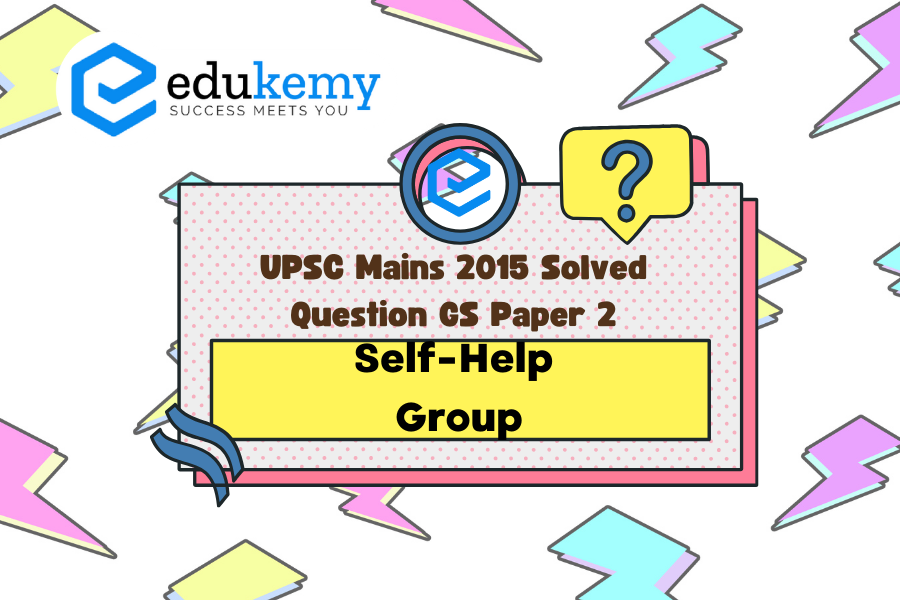The Self-Help Group (SHG) Bank Linkage Program (SBLP), an indigenous initiative in India, stands as a beacon of success in the realm of poverty alleviation and women empowerment. Introduced to address the multifaceted challenges faced by marginalized communities, especially women, this innovative program has emerged as a powerful catalyst for socio-economic transformation. The fundamental premise of SBLP revolves around the formation of self-help groups comprising individuals with common socio-economic backgrounds, fostering a sense of community and collective responsibility. These groups, primarily consisting of women, are provided with financial literacy training, skill development, and entrepreneurial guidance, equipping them with the tools necessary for economic independence.
A pivotal aspect of the SBLP is its strategic linkage with formal banking institutions, facilitating financial inclusion for those traditionally excluded from mainstream financial services. Through this linkage, SHGs gain access to credit facilities, enabling them to initiate and expand micro-enterprises. The program’s success is underscored by its ability to empower women as active contributors to their households and communities. Additionally, the SBLP has played a pivotal role in fostering a culture of savings, financial discipline, and entrepreneurship among its participants. As a result, it has not only lifted individuals out of poverty but has also contributed significantly to the overall development and empowerment of women in diverse socio-economic landscapes across the country. The Self-Help Group Bank Linkage Program thus stands as a testament to India’s innovative approach to addressing poverty and gender disparities, demonstrating the potential of grassroots initiatives in fostering lasting change.
Tag: Development processes and the development industry —SHGs.
Contents
Decoding the Question:
- In the introduction, define SHG and SHG-SBLP.
- In Body, elaborate three types of SHG Bank Linkage Program models and the impact of these SHG bank linkages on poverty alleviation and women empowerment programs.
- Conclude with suggestions like the need for significant investment in providing institution-building support, etc.
Answer:
Self-help groups (SHGs) are informal associations of people who choose to come together to find ways to improve their living conditions. It can be defined as a self-governed, peer-controlled information group of people with similar socio-economic backgrounds and having a desire to collectively perform a common purpose.
A major effort to provide banking services to the weaker and unorganized sector was the Bank Self Help Group Linkage Programme which was launched in the early 1990s on the recommendation of the SK Kalia committee. The program was started at the initiative of NABARD in 1992 to link the unorganized sector with the formal banking sector. Under this program, which is India’s innovation banks were allowed to open savings accounts for Self-Help Groups (SHGs).

In India There are Three Types of SHG Bank Linkage Program Models:
- In the first model, the bank itself acts as a self-help group-promoting institution (SHPI). Under this model, SHG linkages are facilitated through NABARD’s policy of converting regional rural banks (RRBs) into self-help-promoting institutions (SHPIs).
- Under the second model, banks opened saving accounts and then provided credit directly to the SHGs, while NGOs acted as facilitators.
- Under the third model, the NGOs act both as facilitators and microfinance intermediaries. First, they promote groups, nurture them, and train them, and then they approach banks for bulk loans for lending to the SHGs.
The Self-Help Group (SHG) Bank Linkage Program (SBLP)- Effective Poverty Alleviation and Women Empowerment Programmes:
- In 1992-93, only a few SHGs were credit-linked but it grew rapidly over the years reaching more than lakhs of SHGs recently. The SHG-bank linkage program is perhaps the largest and fastest-growing microcredit program in the world in terms of its outreach.
- According to recent data by NABARD, the share of women SHGs in the total SHGs with savings bank accounts was more than 80%.
- Women’s access to credit was prioritized as an international agenda at the Fourth World Conference on Women in Beijing (1995). Since then, the number of women receiving microfinance has increased rapidly.
- The Self-Help Group (SHG) Bank Linkage Program (SBLP) is one step towards achieving Goal 5 of SDG i.e., Achieve gender equality and empower all women and girls.
- Major advances in women’s livelihood conditions have come about through the institution of microfinance and women’s participation in the local markets.
- The status of women within the community is also enhanced.
Both for SHGs and SHG federations there is a need to aspire to attain standards following the best practices. As the SHG federations are emerging as community-owned microfinance institutions, there is a need for significant investment in providing institution-building support. There are many successful women’s forums and organizations that are trying to bring rural women together for developmental work.
In case you still have your doubts, contact us on 9811333901.
For UPSC Prelims Resources, Click here
For Daily Updates and Study Material:
Join our Telegram Channel – Edukemy for IAS
- 1. Learn through Videos – here
- 2. Be Exam Ready by Practicing Daily MCQs – here
- 3. Daily Newsletter – Get all your Current Affairs Covered – here
- 4. Mains Answer Writing Practice – here


